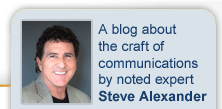Establishing maximum participation and a risk-free environment of communication is vital to a successful facilitation process. We’ve developed a framework for engaging and developing the client team in a measurable, achievable, successful process… with outcomes they own and help them achieve their mission. The protocol we’ve developed is customized and guided by the objectives, as defined in a company, organizational or project mission.
Any process of this nature is only as effective as the facilitator and team members are able to agree on the initial parameters for leading and developing the team to achieve its goals. Facilitation requires a “shift” in trust and responsibility so the team and its leadership focus efforts on the process and content of its goals. The facilitator’s role is to effectively “manage” the team’s expectations, process, milestones, group dynamics and functions, as well as all related internal issues to achieve maximum performance.
Elements of an Effective Process
An effective and productive facilitation establishes early on (first session) parameters and guidelines for all of these mutual efforts through the various tools and processes we’ll describe later. In addition — and equally important — the team (with the assistance of the facilitator) must establish trust and rapport with the team’s leadership and participants in order to create the risk-free environment that will draw out the best, most honest and essential “content” from each of the team members.
Through a standard set of guidelines and principles, and the individual facilitator’s experience and style working with strong leaders and groups with diverse levels of experience, personalities and work/leadership styles, a seasoned facilitator’s goal is to build these key team agreements in the initial session. Checkpoints are built in along the way to affirm them and make adjustments as the team achieves its working style with the guidance and leadership of the facilitator.
Contributions of a Seasoned Facilitator
As the team progresses in accomplishing both content and process objectives, the facilitator’s role shifts more to management of group dynamics, information collection and confirmation, milestones monitoring and the occasional crisis intervention normally inherent in group dynamics.
The final role of the facilitator is to ensure that outcomes reflect the initially agreed-upon goals and objectives and that the team has experienced a process that is fair, built on trust, mutual respect and free and open participation. It’s now important that the facilitator is confident that the team can embrace the outcomes from the process, for example, the strategic plan (or other team mission), as a comprehensive set of solutions and guiding principles for implementation. The adoption of the team’s “point of view” perspective and direction on the project is essential.
The end goal of effective facilitation allows for wide variation in differences of style, attitude and personality while producing “ownership” of the outcome for each and every team member.
Following are some of the milestones and highlights of our successful facilitation protocol.
Setting the Road Map
Here, we establish team goals and objectives and then clarify them with the project team. We have a number of tools we introduce and employ during our process, including facilitation guidelines, levels of consensus tools, decision trees, spectrum chart for public/non-team participation and the individual viewpoint to common “point of view” framework.
We set specific, measurable objectives and milestones for the project and for the process itself. We define success and what we’ll need to accomplish to achieve it. We talk a lot about how we need to achieve it by defining the model of a successful process. We review leadership style and roles and identify timeframes for measurement.
On the Journey to Success
While allowing a certain amount of individualism for the group to find itself through team-building, there are a number of tools we believe can maintain focus and progress. We appoint a timekeeper to ensure regular, ongoing buy-in from team, a kind of check-in agreement. There’s also a regular progress reporting process and confirmation of consensus/non-consensus at each session. The team is guided by a milestones and a key decisions chart as well.
Our process develops majority and alternative views in its framework, as appropriate, which becomes the final product. This includes an executive summary, highlights of insights and learning, conclusions and adoption the group’s “point of view,” majority and alternative views, recommendations and actions and support materials and addenda.
Lastly, we delineate how we will evaluate attainment of our goals and objectives through success measurements for both content and process post-planning session.




